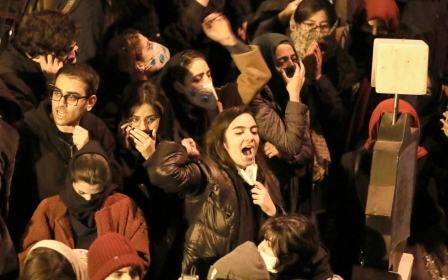US troops hid in Saddam-era bunkers during Iran strikes: Report

US troops were ill-prepared to fend off Iran's ballistic missile attacks last week, with American soldiers forced to take cover in bunkers built by Saddam Hussein's administration, CNN reported.
While the US had built its own bunkers at the Ain al-Asad airbase, those shelters were not built to deflect long-range missiles that Iran fired, CNN said, citing testimony from military personnel.
"You can defend against (paramilitary forces), but you can't defend against this," Captain Patrick Livingstone, the US Air Force Security Forces Commander on the base, told CNN.
"Right now, this base is not designed to defend against missiles."
Iran's attack last week came in response to the assassination of Qassem Soleimani, Iran's top general.
No casualties were reported during the retaliatory strikes, but 10 of Iran's 11 missiles that targeted the base hit managed to "shred sensitive US military sites," CNN said.
A special forces compound, two hangars, and the US drone operators' housing unit were reportedly destroyed.
Troops and personnel at the base were said to have been made aware of Iran's plans to attack the base several hours before the strikes took place, giving troops plenty of time to take cover.
Most of the base had been on lockdown for around two hours before the first missile hit, the news agency said.
But the US had not built structures on the base, one of the oldest and largest in Iraq, to protect against a large-scale missile attack like the one Iran had planned.
'You could feel the blast wave'
US troops who had been at the base the night of the strikes said they were not certain the bunkers would hold up under attack.
"I was sitting in a bunker and I was like man, maybe I made the wrong decision [to come down here]," Lieutenant Colonel Staci Coleman, one of the team leaders who moved troops into one of the Saddam-era bunkers, told CNN.
"About 10 minutes, after I said that to myself, it went boom boom boom boom boom and I said well there's my answer."
"The whole ground shook. It was very loud," she said. "You could feel the blast wave in here. We knew they were close."
Shared with the Iraqi military, the base houses about 1,500 members of the US military and the US-led coalition against the Islamic State (IS) group.
During a press tour organised by US authorities on Monday, the Associated Press (AP) reported large craters in the ground and damaged military trailers.
AP said forklifts were at work, lifting rubble and loading it onto trucks from an area the size of a football stadium.
US troops began using Iraq's Ain al-Asad during the 2003 US invasion of Iraq. Today the base is used to station troops charged with fighting the IS group.
On 4 January, days before Iran's attack, Myles B. Caggins, operations spokesman for the US-led fight against IS, said on Twitter that the US had "increased security" at Iraqi bases housing anti-IS troops after an uptick in militia rocket attacks.
Middle East Eye delivers independent and unrivalled coverage and analysis of the Middle East, North Africa and beyond. To learn more about republishing this content and the associated fees, please fill out this form. More about MEE can be found here.





